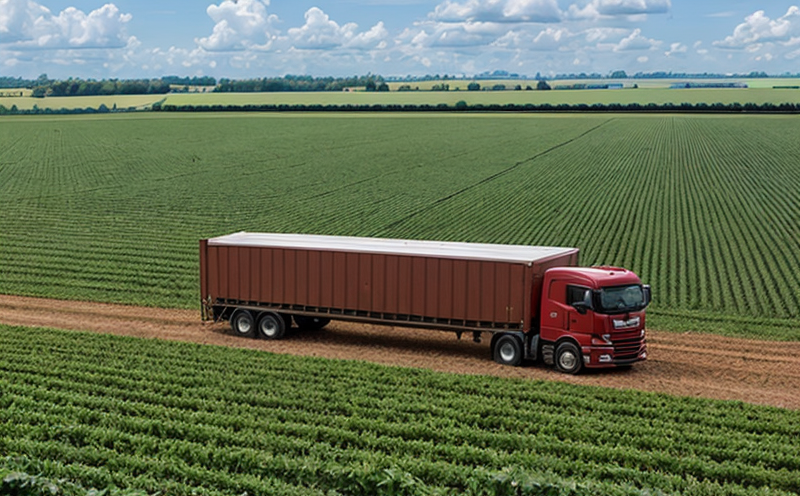Cushioning Material Performance Testing
The integrity of agricultural goods during transportation and storage is crucial to minimizing spoilage and ensuring product quality. Cushioning materials play a vital role in protecting these goods from physical damage, vibration, and external stress. This service focuses on the comprehensive evaluation of cushioning materials used in packaging for agricultural products, ensuring they meet stringent international standards.
The testing process involves several critical steps that are tailored to simulate real-world conditions encountered during transport and storage. These include shock resistance, compressive strength, resilience under different environmental factors like temperature and humidity, as well as the ability to maintain their protective properties over time. Testing is conducted using a variety of specialized equipment designed to replicate various modes of transportation such as road, rail, air, and sea.
The primary goal is to determine if the cushioning materials can effectively absorb impacts without compromising the integrity of the packaged goods. This ensures that products reach their destination in optimal condition, thereby enhancing customer satisfaction and reducing losses due to damage or spoilage.
For accurate results, specimens are prepared according to specified dimensions and weight requirements relevant to typical agricultural packaging sizes. The testing apparatus used includes drop tower simulators for shock resistance evaluation, compression testers for compressive strength assessment, and environmental chambers for examining performance under varying climatic conditions.
The data collected from these tests is meticulously analyzed against international standards such as ISO 16770-3 for drop impact testing of packaging materials, ASTM D882 for tensile properties of thin plastic films and sheets, and IEC 60295 for the performance of electrical insulation under mechanical stress. Compliance with these specifications guarantees that the cushioning materials used in agricultural packaging are both reliable and efficient.
Our expertise in this area allows us to offer tailored solutions that cater specifically to your unique needs within the agriculture and forestry sectors. Whether you require basic compliance checks or comprehensive performance assessments, our team of experienced professionals can help ensure your products meet all necessary criteria for protection during transit.
Industry Applications
| Type of Agricultural Goods | Cushioning Materials Evaluated |
|---|---|
| Fresh produce (fruits and vegetables) | Pallet pads, bubble wrap, foam inserts |
| Grains and cereals | Cardboard dividers, polyethylene sheets |
| Dairy products and eggs | Elastic netting, air pillows |
| Poultry and meat | Rigid foam blocks, reinforced cartons |
The testing of cushioning materials is particularly important for perishable goods like fresh produce which must be protected from physical damage during transportation. For grains and cereals, the focus is on preventing contamination while maintaining airflow to avoid mold growth.
When it comes to dairy products and eggs, special attention is given to ensuring that the packaging provides sufficient protection against pressure variations within the transport environment. For poultry and meat, robust cushioning solutions are essential to maintain product integrity during rough handling at loading/unloading points.
Quality and Reliability Assurance
The quality assurance process for cushioning materials in agricultural packaging involves several key stages aimed at ensuring consistent performance across all batches. At the outset, rigorous selection criteria are applied to choose appropriate materials based on factors such as weight, thickness, flexibility, and durability.
- Weight: The weight of the cushioning material directly influences its capacity to absorb impacts without collapsing.
- Thickness: Determines how well it can distribute forces evenly across the packaging surface.
- Flexibility: Allows the material to conform to irregular shapes within containers, providing better protection.
- Durability: Ensures that the cushioning remains effective throughout multiple transport cycles without degradation.
Once selected, samples are subjected to a series of tests designed to simulate real-world scenarios. These include static load testing to measure compressive strength, dynamic loading tests to assess shock absorption capabilities, and environmental stress cracking tests to evaluate resistance against moisture exposure.
Data collected from these evaluations is analyzed using statistical methods to establish acceptable ranges for each parameter. This information forms the basis of our quality assurance protocols which are continuously updated to reflect advances in packaging technology and changing industry practices.





